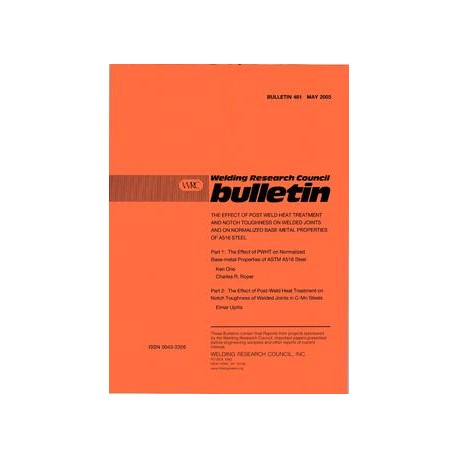Cart 16 Product Products $541.59 (empty)
-
 1 x DIN 1045-1000$38.24
1 x DIN 1045-1000$38.24 -
 1 x UOP 999-97$122.76
1 x UOP 999-97$122.76 -
 1 x AS...$62.21
1 x AS...$62.21 -
 1 x GB/T...$38.72
1 x GB/T...$38.72 -
 1 x SAE AIR 1077$34.32
1 x SAE AIR 1077$34.32 -
 1 x AASHTO T...$5.28
1 x AASHTO T...$5.28 -
 1 x DIN 1045-100$28.22
1 x DIN 1045-100$28.22 -
 1 x CII RS8-1$17.60
1 x CII RS8-1$17.60 -
 1 x AS 1001-1970$8.38
1 x AS 1001-1970$8.38 -
 1 x AS/NZS...$71.61
1 x AS/NZS...$71.61 -
 1 x FORD...$15.40
1 x FORD...$15.40 -
 1 x API Std...$25.96
1 x API Std...$25.96 -
 1 x ASME...$17.16
1 x ASME...$17.16 -
 1 x AS 1003-1971$13.93
1 x AS 1003-1971$13.93 -
 1 x WRC 482$26.40
1 x WRC 482$26.40 -
 1 x FORD DR-10$15.40
1 x FORD DR-10$15.40
No products
To be determined Shipping
$541.59 Total
Product successfully added to your shopping cart
Quantity
Total
There are 16 items in your cart. There is 1 item in your cart.
Total products $541.59
Total shipping To be determined
Total $541.59
New Reduced price!  View larger
View larger
 View larger
View larger WRC 481
M00000554
New product
WRC 481 The Effect of Post Weld Heat Treatment and Notch Toughness on Welded Joints and on Normalized Base-Metal Properties of A-516 Steel: Part 1 & Part 2
Bulletin / Circular by Welding Research Council, 2003
K. Orie, C. Roper; E. Upitis
In stock
More info
Full Description
Part 1: The Effect of Post Weld Heat Treatment and Notch Toughness on Welded Joints and on Normalized Base-Metal Properties of A-516 Steel: The Effect of PWHT on Normalized Base-metal Properties of ASTM A516 SteelThis report details the investigations conducted by Bethlehem-Lukens Plate into the behavior of ASTM A516 Grade 70 steel plate subjected to post-weld heat treatment (PWHT). Those studies, conducted under PVRC Project No. 98-TME-01, were initiated to characterize the effects of PWHT on hardness and notch toughness of welded joints. Inherent in the scope of these efforts was some work on the behavior of the base metal. However, the reports generated from those studies in-cluded little definitive discussion on the effects of PWHT on base metal properties. They further suggested that the amount of scatter in the limited amount of data made it difficult to establish trends, especially pertaining to any parametric analysis such as correlation with Larson-Miller Parameter (LMP).
The results of earlier internal work by Lukens Steel demonstrated a well-defined correlation between base metal strength, toughness and time-temperature relationships. Additional investigations have been continued by Bethlehem-Lukens Plate to improve normalized base metal toughness and improve internal guidelines for predicting properties of post-weld heat-treated material conforming to A516 Grade 70. These new data reinforce previous conclusions that PWHT has a detrimental and predictable effect on base metal properties that needs to be considered when evaluating application of PWHT.
Part 2: The Effect of Post Weld Heat Treatment and Notch Toughness on Welded Joints and on Normalized Base-Metal Properties of A-516 Steel: The Effect of Post-Weld Heat Treatment on Notch Toughness of Welded Joints in C-Mn Steels
This report compiles data on A 516 Gr. 70 and A 537 Cl. 1 base metal and welded joints in the initial (as-welded) and in the PWHT condition using data provided by Chicago Bridge however, it was possible to observe some general trends in the results due to PWHT. The longitudinal base metal Charpy V-notch impact test (CVNL) data shows a definite loss of notch toughness with increasing PWHT temperatures and hold times (greater LMP values) in both materials. The base metal data also shows that there is a more significant loss of toughness (in terms of delta CVNL, %) at lower impact test temperatures than at higher impact test temperatures at the same Larson-Miller parameter (LMP). There is a general trend to improved notch toughness in heat affected zones of A 516 Gr. 70 with PWHT. This trend is not so obvious in A 537 Cl. 1 heat affected zones. There is also loss of notch toughness in the HAZ of thinner plates in both materials due to heat of welding.

